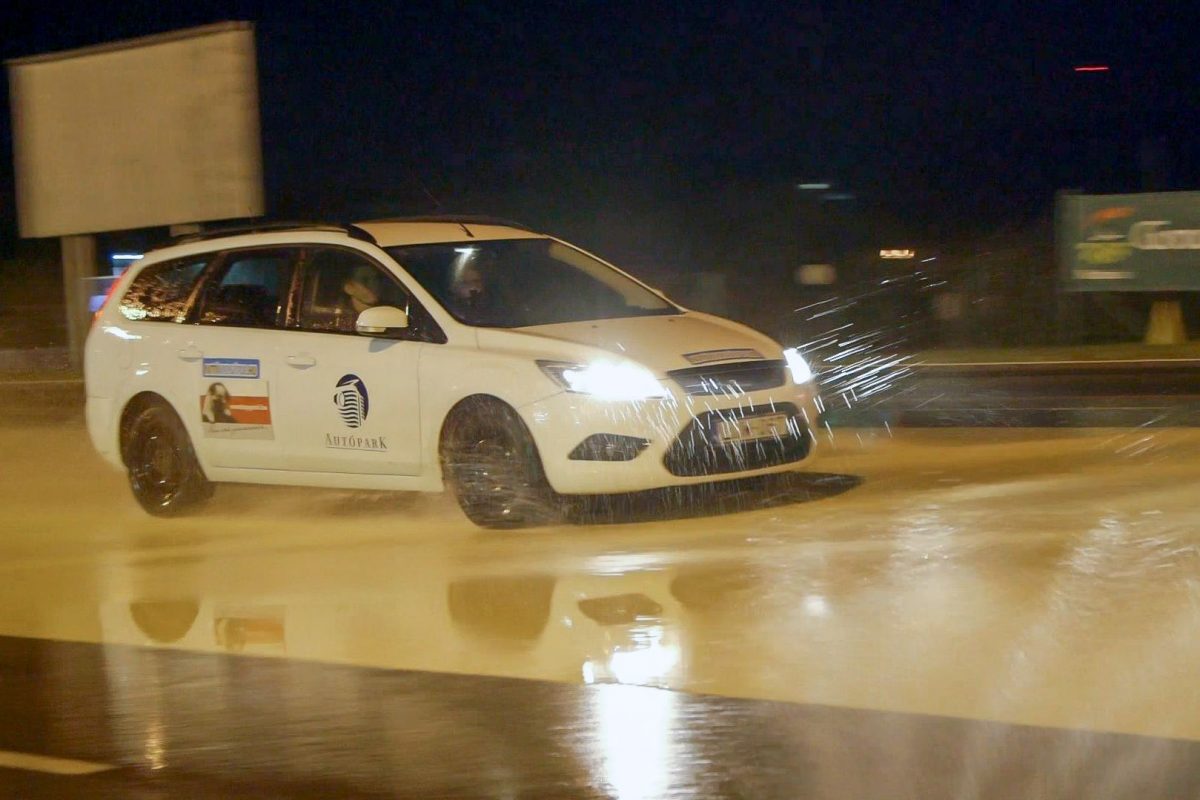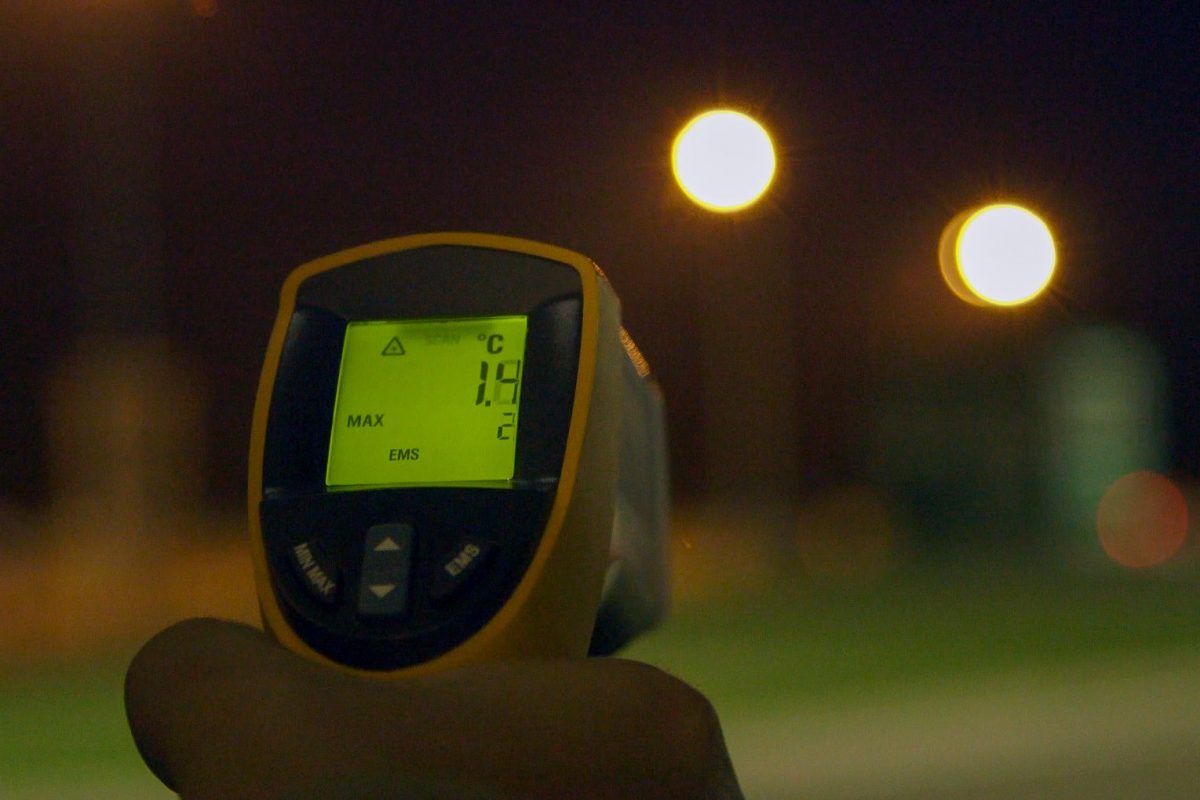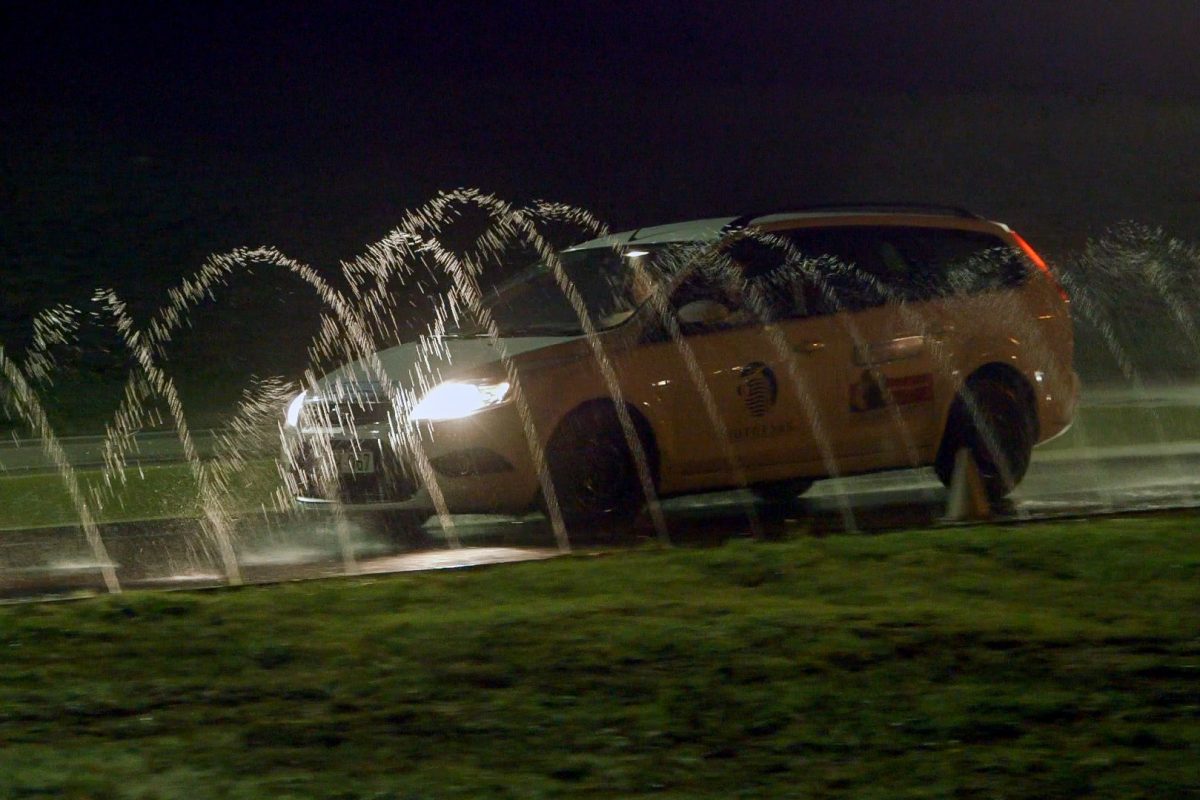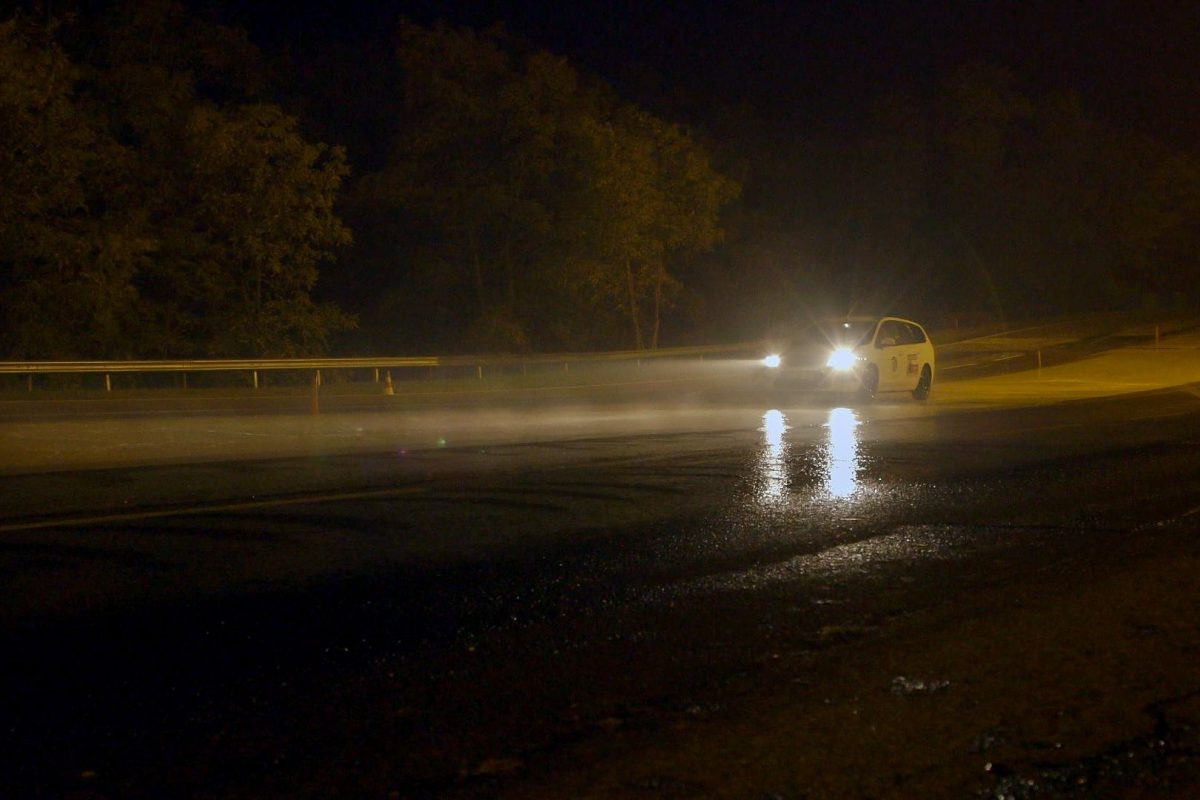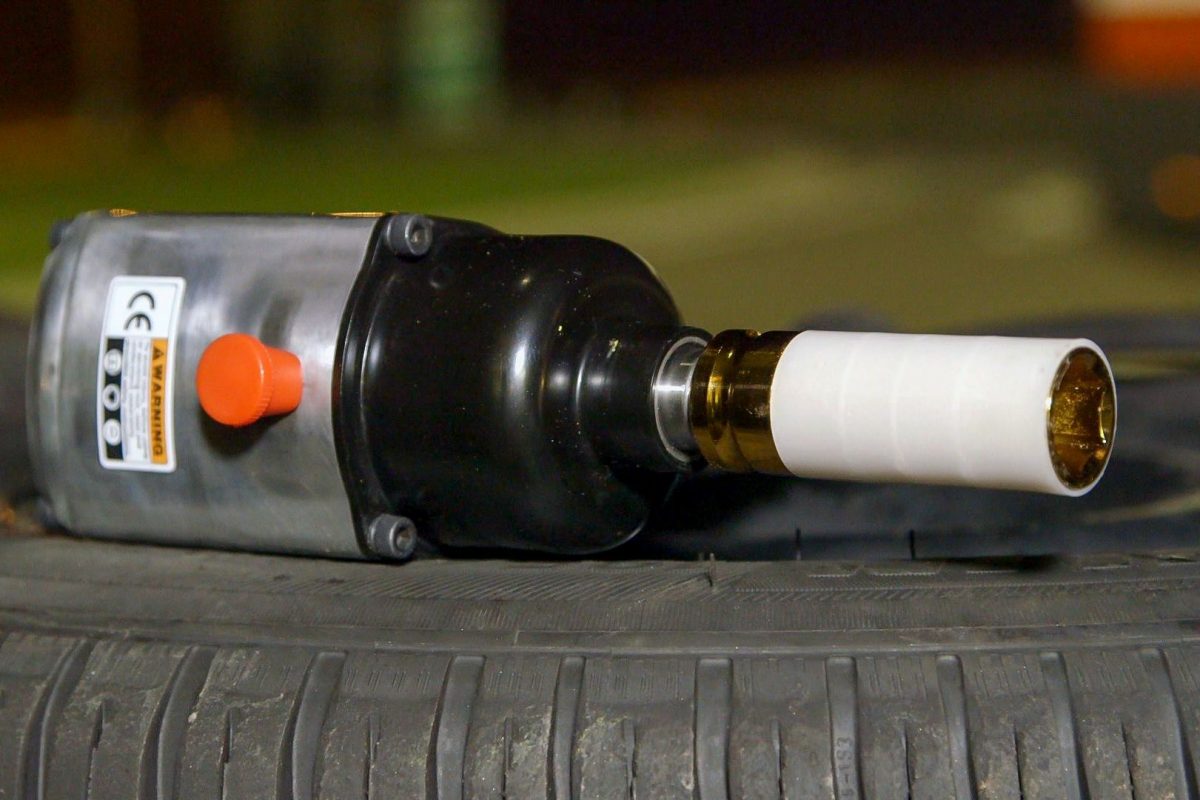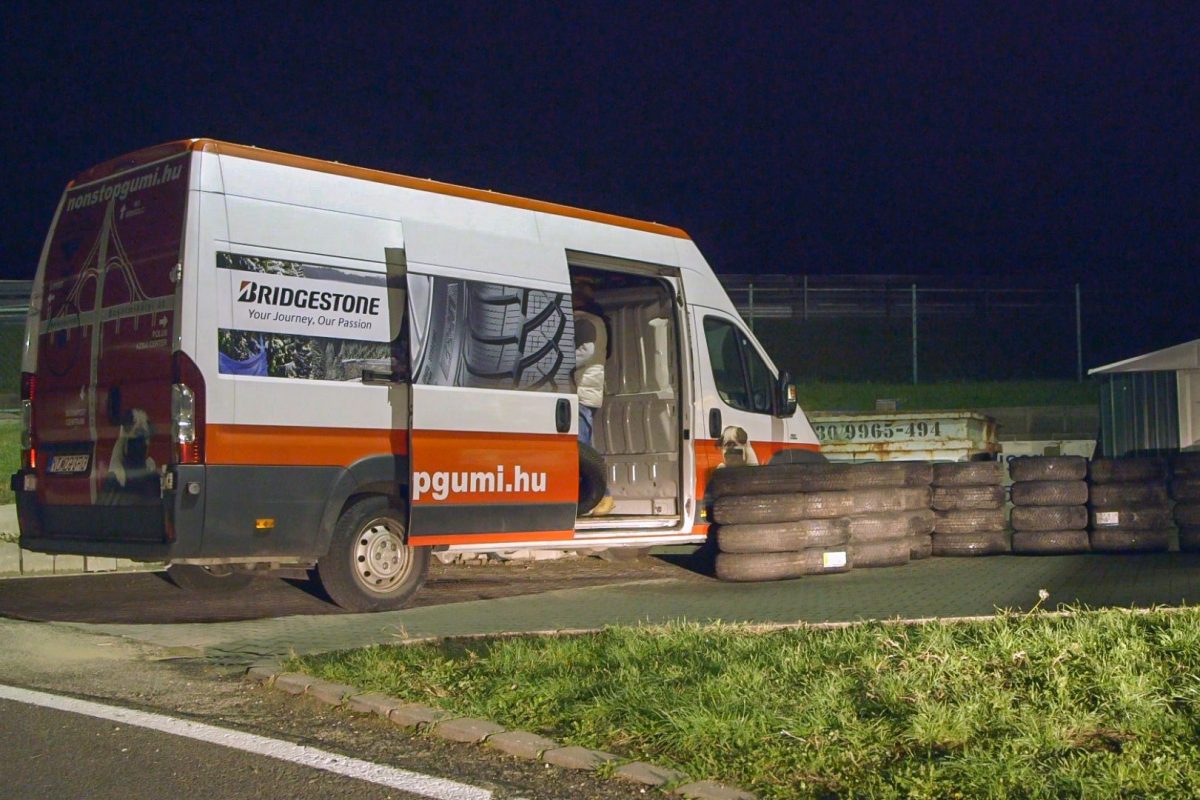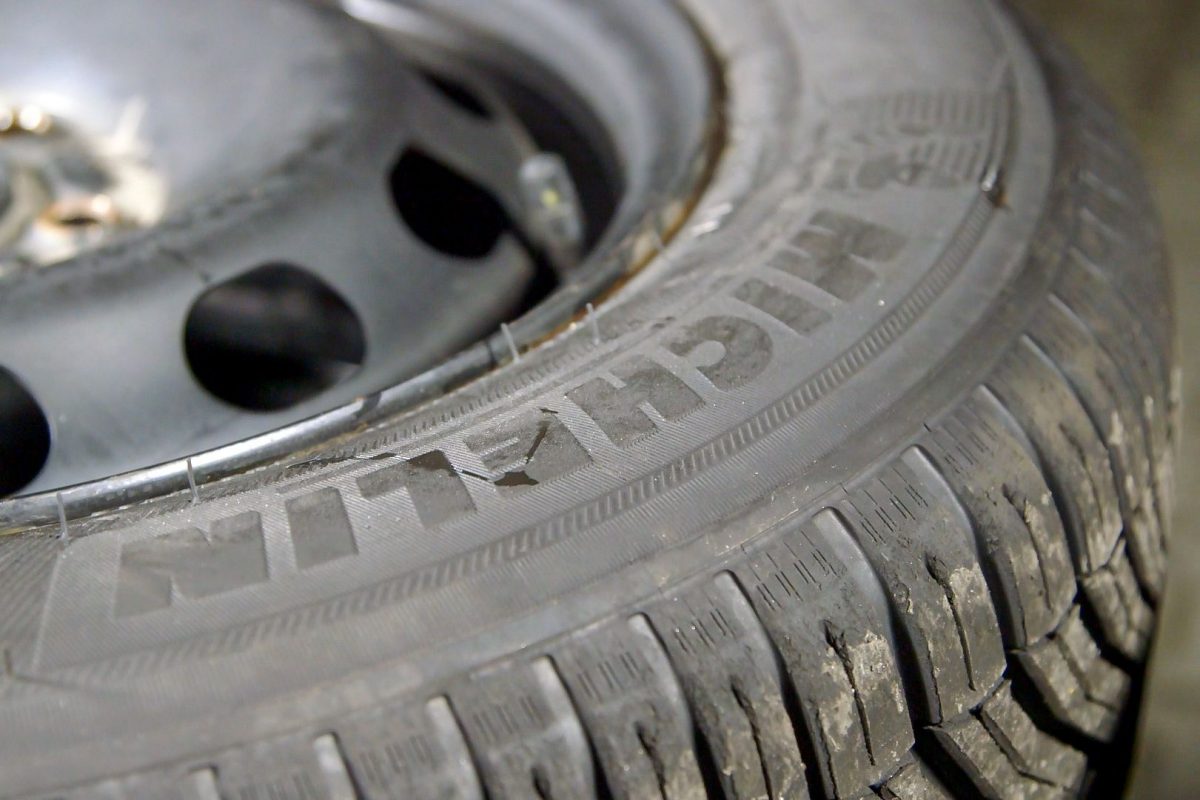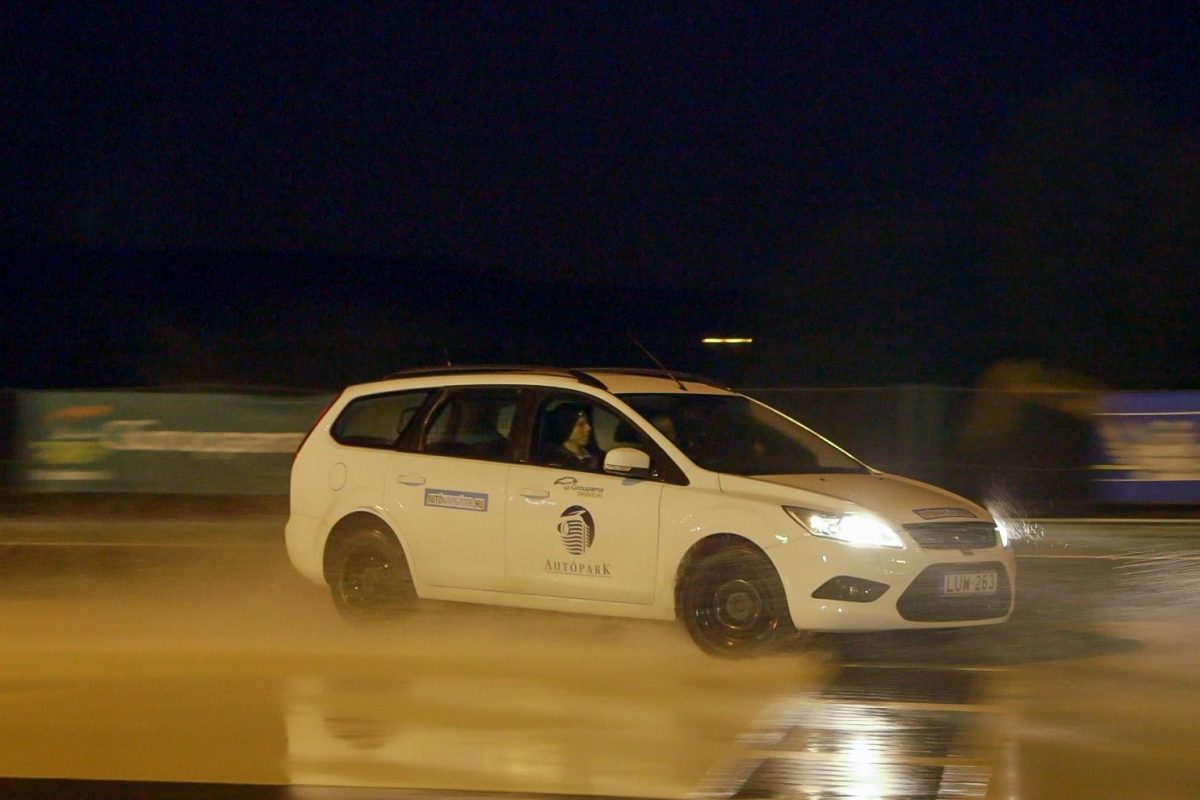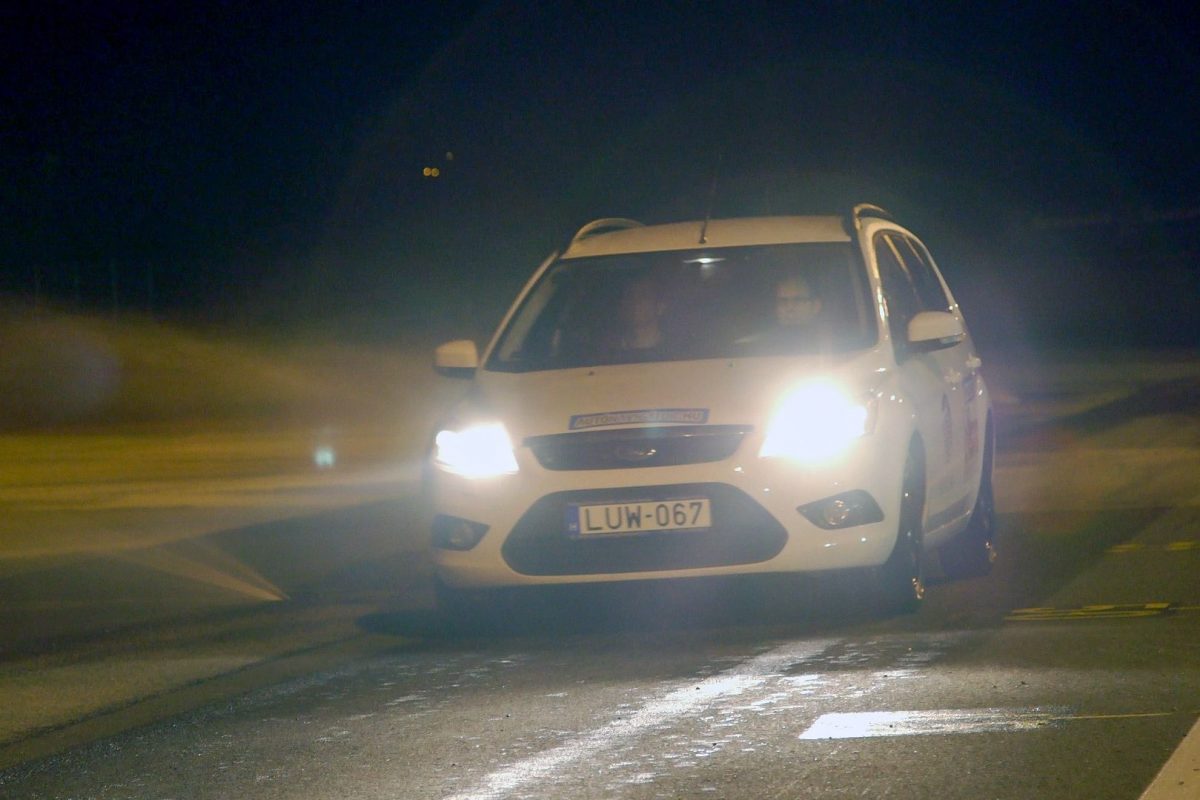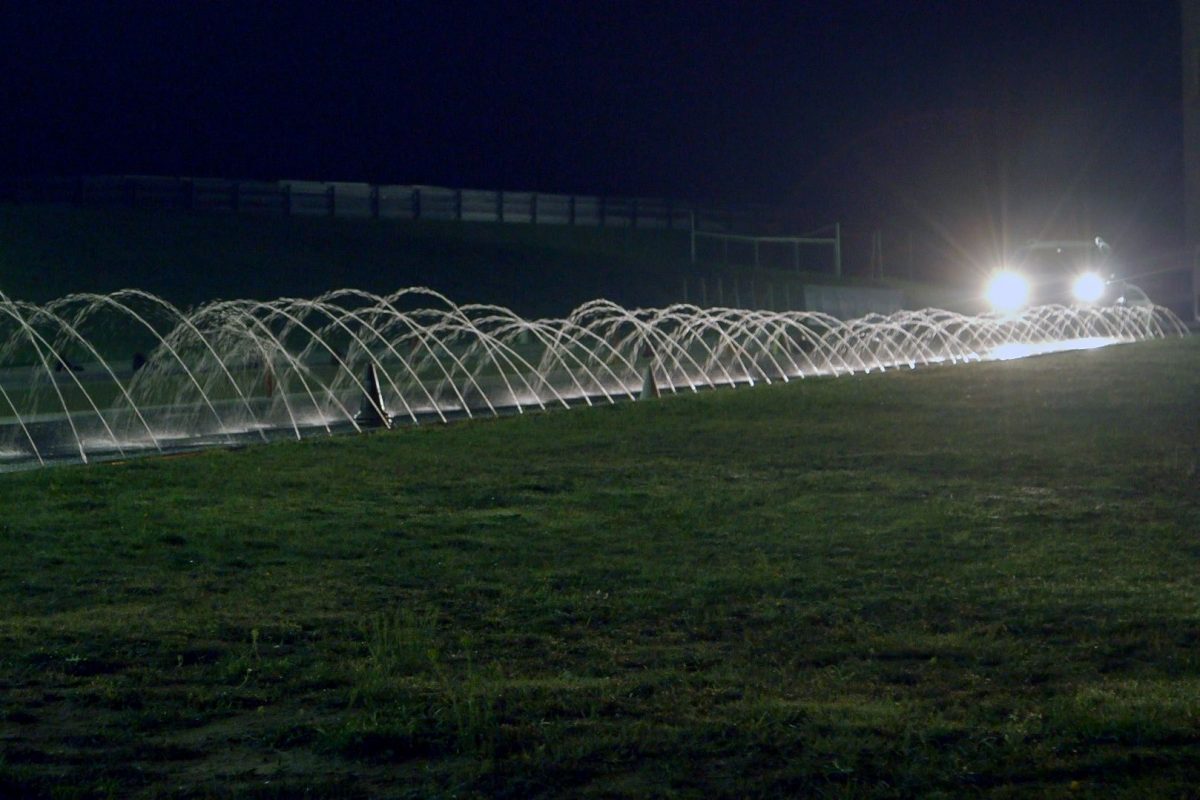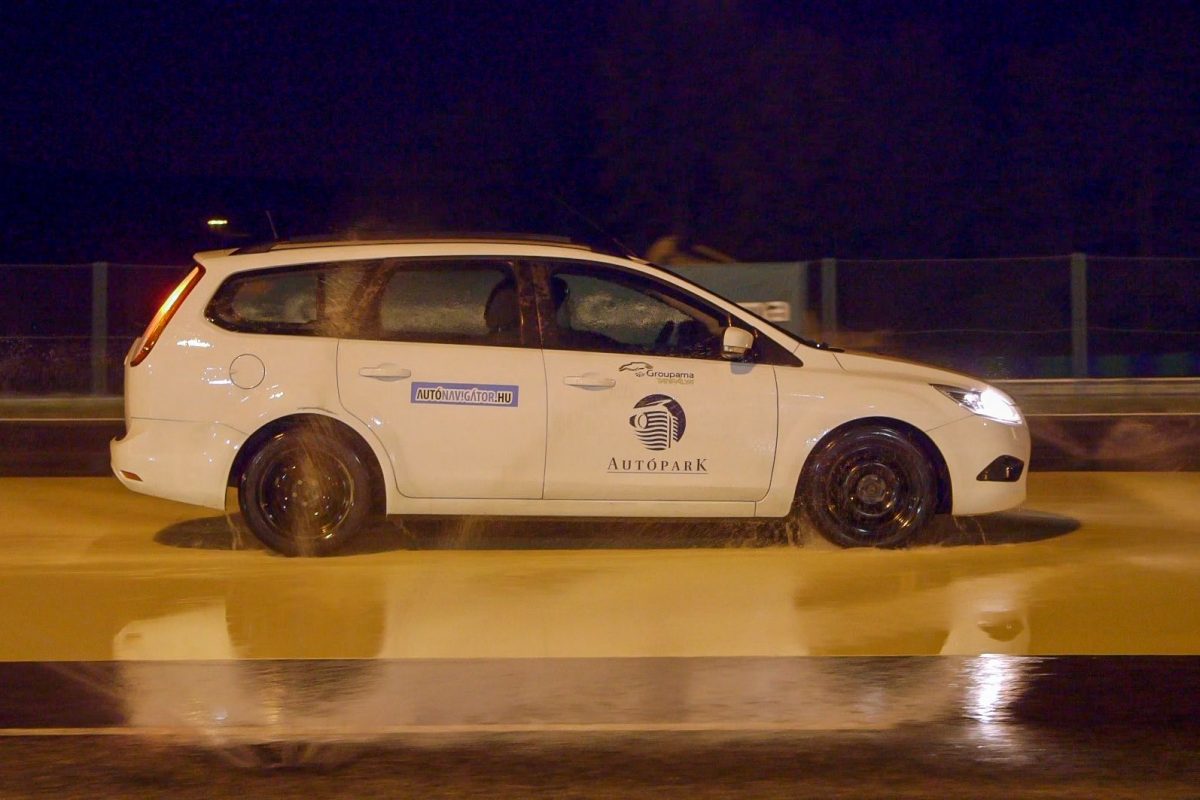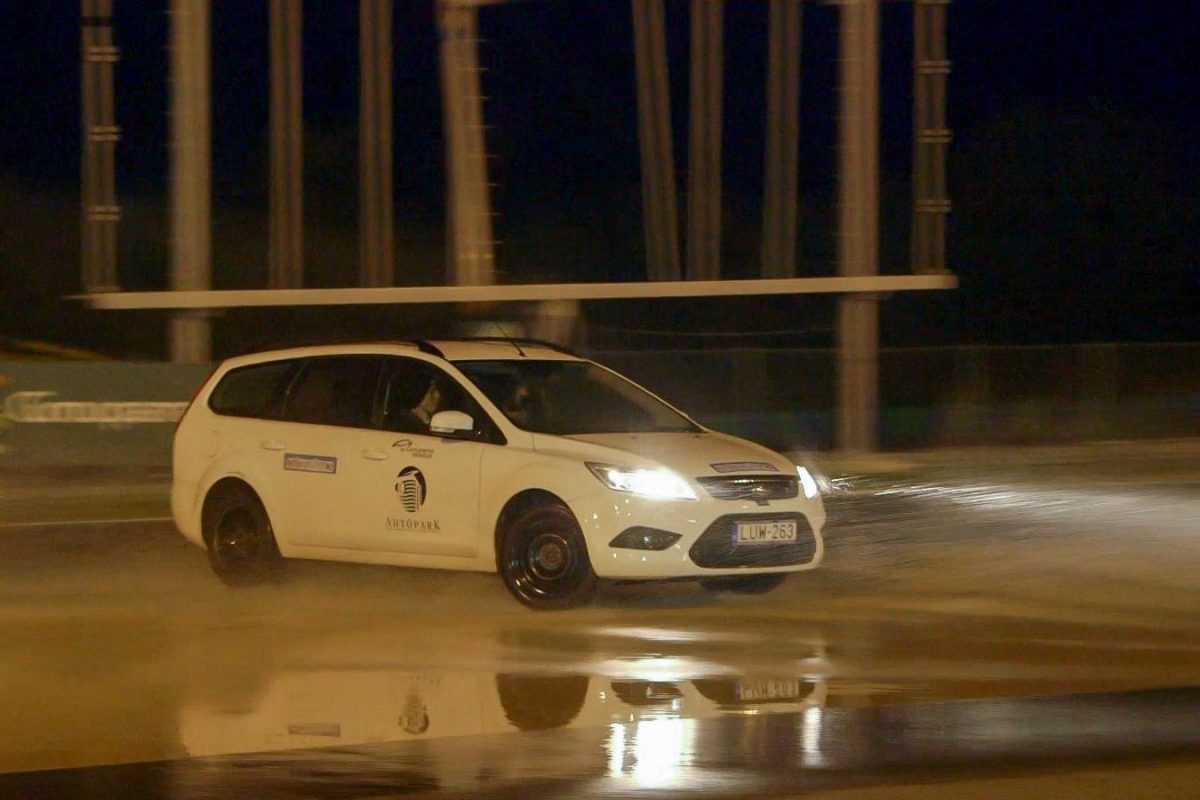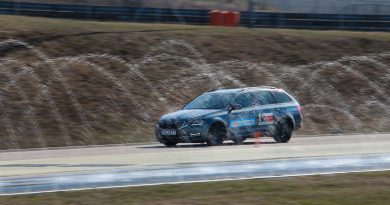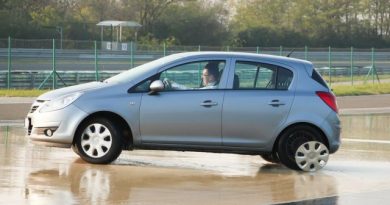What are the best tyres for this winter? We have tested 19 sets
Winter Tyre Test 2015: featuring a record number of tyres
Ez a cikk több mint 90 napja frissült utoljára, ezért kérjük, az olvasása során ezt vegye figyelembe!
This time, the winter tyre test of Autónavigátor and nonstopgumi also featured the latest wonder tyres. Read on to find out which one proved to be the best.
With almost routine-like measurements, we compared a record number of tyres this year on the Groupama Practice Lane together with the team of nonstopgumi. Our test cars were retired Ford Focus police cars, and the tyres came in the most popular 195/65 R15 size
Once again, we used retired Ford Focus police vehicles, which were still in surprisingly good condition, by the way (two cars were used, so that while we were doing measurements with one, the untiring mechanic of nonstopgumi could fit the other one with the next set). However, there were also some new developments: the surface of the Hungaroring had been broken up in autumn, so we could not do our measurements in its home stretch—our entire test was done on the Practice Lane. This involved more turning, perhaps even more intense accelerations, as well as lots of emergency braking. We slammed on the brakes of the Focus 285 times, to be precise. When the tyres had sufficient grip, the hazard lights were blinking and the brake assist was hard at work; when not—for example on wet synthetic resin—we were just sliding along and waiting for the car to stop. We would like to stress that it is useful for every driver to try out their own and their car’s and tyres’ abilities under safe circumstances.
- Braking distance from 60 km/h on dry asphalt
- Braking distance from 60 km/h on wet asphalt
- Braking distance from 40 km/h on wet synthetic resin (with adhesion properties similar to ice)
- Coasting from 15 km/h (on a slight, constant incline) to test rolling resistance
- Noise levels at 60 km/h
- Climbing power on wet synthetic resin: the time it takes to travel the first 30 metres from a standing position on an incline
Show me all the data – Download the measurement results
It was a long night of testing, with constant ground temperature, continuous stress on the tyres, and of course lots of mounting work
Naturally, we did not base our judgment on feel alone—like before, the test cars were fitted with accurate GPS and recording equipment provided by GPS Aréna, under the supervision of our colleague Tamás Gere. Braking distances for the various tyres were measured down to a precision of 10 centimetres. Braking distances were tested on wet and dry asphalt from 60 and 40 km/h, and on wet synthetic resin simulating icy roads from 40 and 30 km/h. Why two different speeds? To demonstrate how much braking distance the extra speed adds on different road surfaces. The reason why the highest speed for our braking tests for wet resin was 40 km/h is that with the worst summer tyres we were even so barely able to stop on a 80-metre stretch of resin.
Although ground temperature was a constant 2 °C throughout the night, the water we used on the asphalt was 5-6 °C, so our measurements on wet surfaces were done at a slightly higher—but still constant—temperature
The braking distances at the latter extremity can be seen below, but let us look at what else we examined. Our measurements also covered coasting on asphalt from 15 km/h on a constant incline, as well as noise levels and climbing power. The latter was tested on an incline, starting from a fixed point, on wet resin simulating an icy road. What were the tyres we used? Since we thought that without measurements on the Hungaroring we would finish quicker this year, we selected a record number of nineteen types of tyres. To ensure ideal measurement conditions (sufficiently low temperature), we started the testing even later than usual, at 10 p.m., and of course we did not finish that quickly after all, seeing that the last measurement was completed at 5:57 a.m. next morning. The night shift paid off, however, as we were able to do the tests under uniform conditions, with an air temperature of 5-3 °C and ground temperature around 2 °C, almost constant environmental conditions. [BANNER type="1"]
| Heavily used premium summer tyres | HUF 5 000 |
| Used budget winter tyres | HUF 7 000 |
| Used premium summer tyres | HUF 8 000 |
| New premium summer tyres | HUF 12 000 |
| Premiorri Via Maggiore | HUF 13 000 |
| Taurus 601 | HUF 13 483 |
| Infinity INF-049 | HUF 13 538 |
| Barum Polaris 3 | HUF 14 082 |
| Hankook W452 Winter iCept RS2 | HUF 14 805 |
| Firestone WinterHawk 3 | HUF 15 502 |
| Nokian WRD4 | HUF 16 821 |
| Yokohama W.Drive V905 | HUF 17 200 |
| Bridgestone Blizzak LM001 | HUF 17 427 |
| Goodyear UltraGrip 9 | HUF 18 000 |
| Kumho Solus Vier KH21 | HUF 18 000 |
| Continental ContiWinterContact TS850 | HUF 18 477 |
| Michelin Alpin 5 | HUF 20 048 |
| Pirelli SnowControl 3 | HUF 20 525 |
| Michelin CrossClimate | HUF 22 000 |
The 19 sets of tyres included more than usual premium summer tyres—three sets with various degrees of wear. This might seem pointless at first, but by the end of the test it was clear that it had definitely been a good idea to include the new, three-year-old and five-year-old tyres, which also differed in the amount of wear, as there were enormous differences between them. In addition, we included the Michelin CrossClimate ‘all-year’ tyres, which had been left out of the ADAC test and which probably most people were curious about. Also included were the Kumho Solus Vier all-season tyres, a set of used winter tyres, and 13 other brands of new winter tyres. We have to say that the results were astounding!
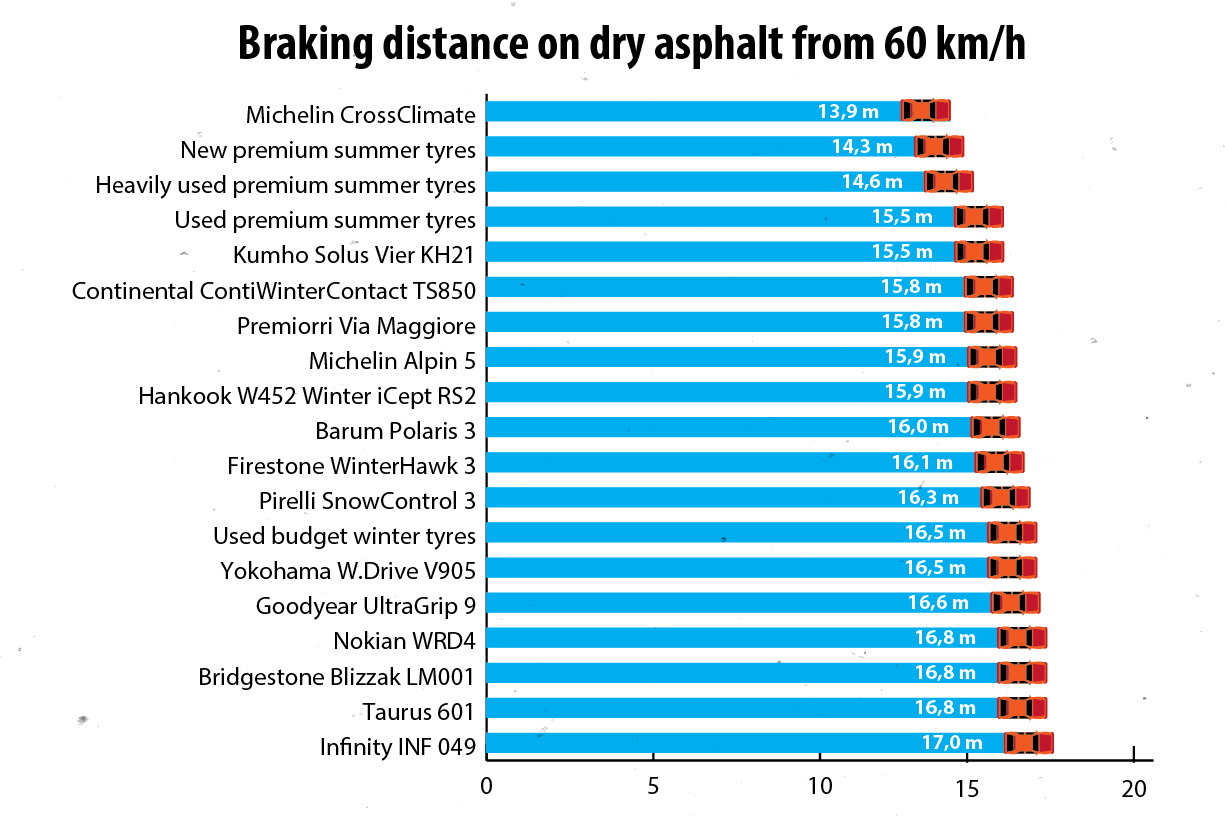 Although the Michelin CrossClimate, marketed as all-year tyres, performed outstandingly on dry asphalt, the dry braking test showed the least variation, with the various tyres having a 3.1 metre dispersion when braking from 60 km/h, and even the summer tyres performed very well here
Although the Michelin CrossClimate, marketed as all-year tyres, performed outstandingly on dry asphalt, the dry braking test showed the least variation, with the various tyres having a 3.1 metre dispersion when braking from 60 km/h, and even the summer tyres performed very well here
It was astounding to see that despite temperatures near zero, the Michelin CrossClimate were tied for first place with new summer tyres on both dry and wet roads. No big surprise here—it was once again proven that as long as there is no real frost, snow or slush, summer tyres are in fact quite adequate. Indeed, changing tyres at 7 °C is recommended not because summer tyres cannot handle 5 °C but because at -2 °C they fail when there is some precipitation. This is well illustrated by the braking distances on wet resin, that is, on icy surfaces.
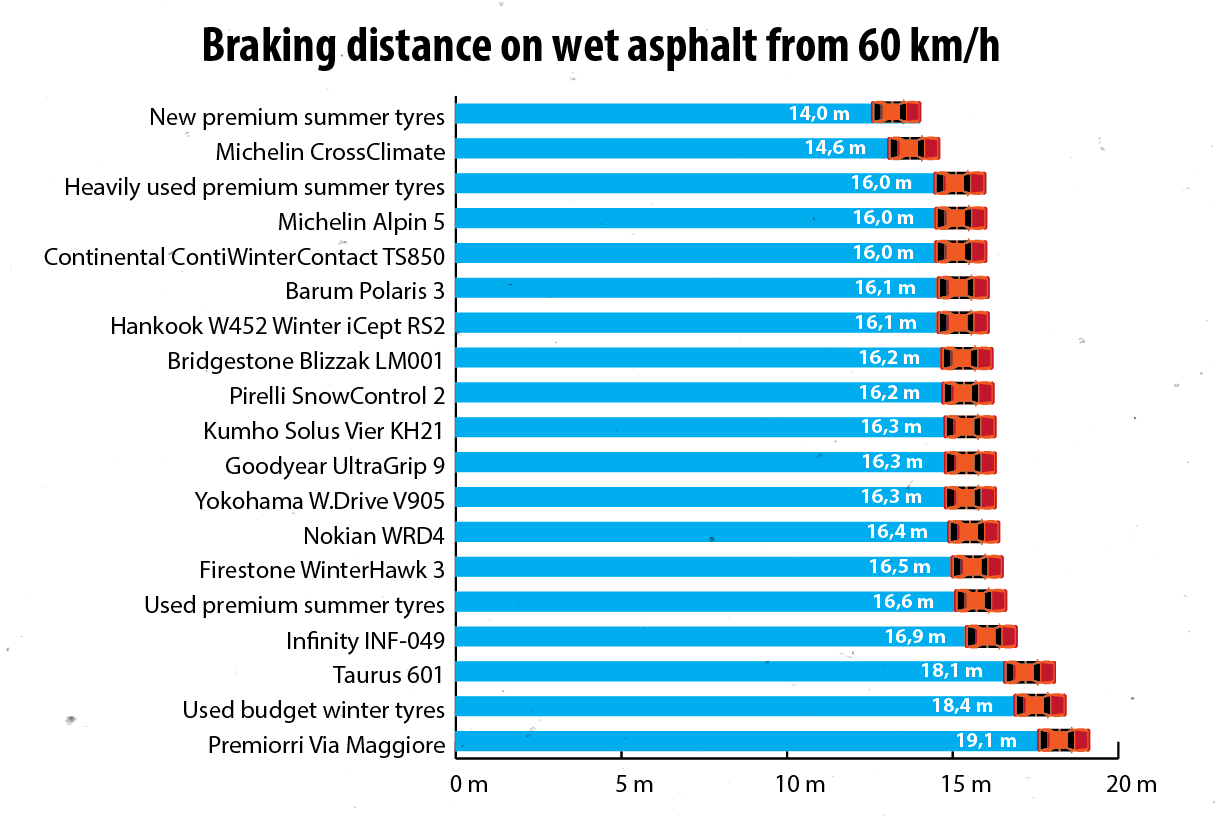 As long as it is not freezing, summer tyres or the Michelin CrossClimate can be good even below 7 °C. Interestingly, on wet roads, the worst performers were winter tyres that were among the best on ice
As long as it is not freezing, summer tyres or the Michelin CrossClimate can be good even below 7 °C. Interestingly, on wet roads, the worst performers were winter tyres that were among the best on ice
How did the Michelin CrossClimate or summer tyres do on wet asphalt? Not well. Not well at all. The CrossClimate achieved a mere 67.5% of the braking ability of the Goodyear UltraGrip 9, the best performer on icy roads, and even the best new summer tyres delivered only 49% of the performance of the best winter tyres. And this is where testing the various summer tyres was starting to make sense. Because while three-year-old tyres delivered 39% results, the more worn, five-year-old set delivered only 29%. In metres, this means that while the Goodyear UltraGip 9 had a 17.7 metre braking distance on ice from 40 km/h, the Michelin CrossClimate had 26.2, new summer tyres 35.5, and the other two summer tyres 45.4 and 61.6 metres, respectively. This means that at a point where the Goodyear tyres were already standing still, the worst summer tyres were still skidding along at 36(!), and the best at 31 km/h. If another car came around the corner or a pedestrian stepped out, the proper tyres could save lives. Inadequate tyres such as more worn summer tyres, on the other hand, could easily leave us stranded on the roadside or in the middle of the road even in non-emergency situations. With the worst summer tyres we tested, we could not climb the ‘icy’ slope in our test at all.
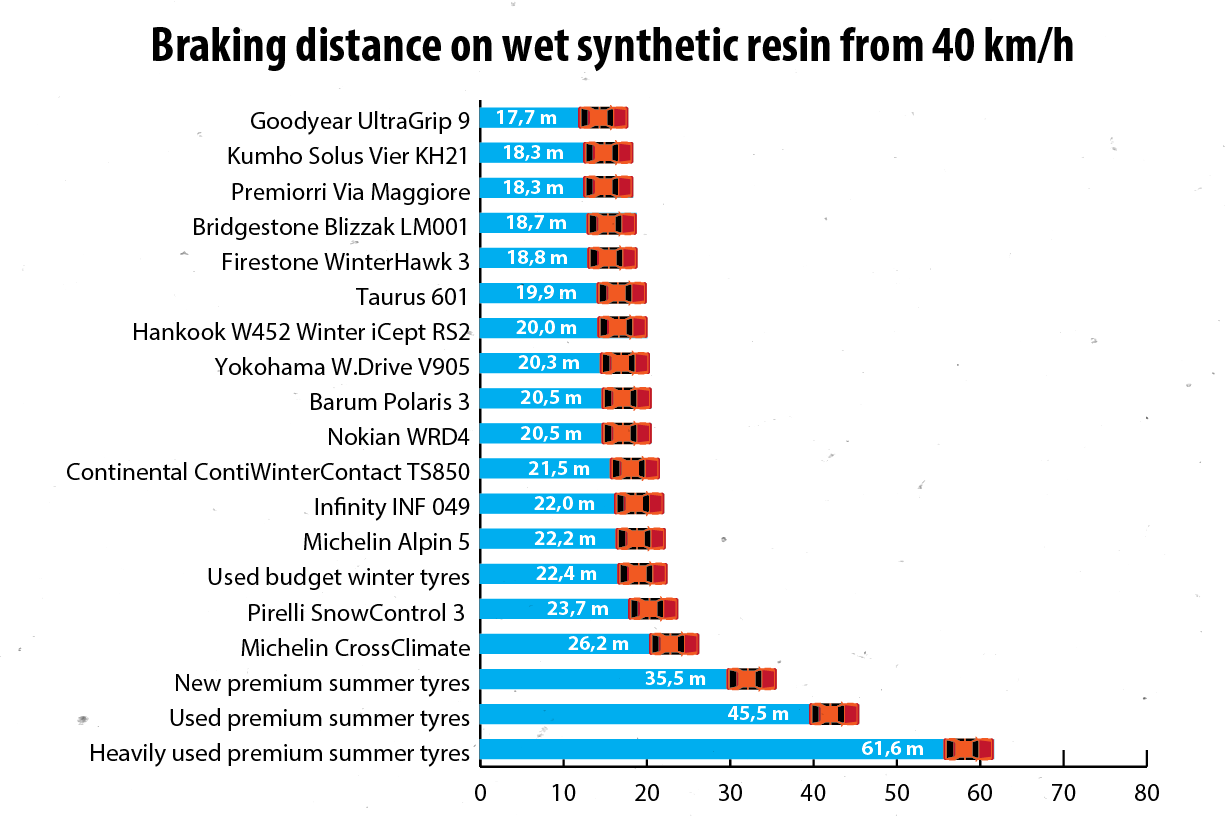 Icy roads are where the serious surprises come in—while a decent set of winter tyres could stop us within 20 metres from 40 km/h, summer tyres require more than three times as much distance. Where a good set of winter tyres has already stopped the car, summer tyres are still speeding along at over 30 km/h
Icy roads are where the serious surprises come in—while a decent set of winter tyres could stop us within 20 metres from 40 km/h, summer tyres require more than three times as much distance. Where a good set of winter tyres has already stopped the car, summer tyres are still speeding along at over 30 km/h
The main surprise of the test was the markedly soft Premiorri Via Maggiore—a Ukrainian make despite the Italian name—which was tied with the Kumho Solus Vier all-season tyres for second place in braking ability on ice, and came out on top in climbing power. Meanwhile on wet roads it performed worst, and there the Kumho was also only middle-rank.
On icy roads the Ukrainian-made Premiorri Via Maggiore excelled in both braking ability and climbing power, but performed poorly otherwise. Meanwhile, summer tyres and the Michelin CrossClimate underperformed on ice; with some of the former, we could not drive up even a slight incline
We can see which tyres performed best in each discipline. On dry and wet roads—above the freezing point—new summer tyres and the Michelin CrossClimate excelled, while on icy roads the Goodyear and the Premiorri were best (both in braking ability and in climbing power). The most heavily worn summer tyres proved to be the most silent, but the Michelin CrossClimate were just barely noisier. As far as rolling resistance is concerned, the used, hardened budget winter tyres outperformed all others, but there is one more crucial factor to consider: wear. As for the latter, we could only ascertain which tyres were showing more extreme, visible changes during the testing. The most noticeable wear was observed on the Kumho Solus Vier all-season tyres, but the wear was quite visible on the Michelin CrossClimate and, to some extent, on the used winter tyres as well. Of course the latter were showing not only the wear from the test. Points were subtracted due to wear for the Chinese Infinity (one of the better Chinese makes), and the familiar—though no longer Hungarian but Serbian-made—Taurus and the Barum as well.
This is not a wine bottle—it is an air wrench. It is a good idea to change tyres for the winter, as real winter tyres still deliver considerable added value
For our summary result we weighted both braking ability on dry, wet and icy roads, and climbing power on icy roads at 20%, wear at 10%, and coasting and noise at 5% each. The result can be seen below. As with last year, the Goodyear UltraGrip 9 proved to be the best, with the new Hankook model W452 Winter iCept RS2—not top of the line in any discipline but a solid average in all of them, and with flawless wear characteristics—at second place. Third place goes to the Continental ContiWinterContact TS850, which fell behind the second mostly on synthetic resin, that is, on icy roads. It should be noted, though, that it fell behind only by a minimum, just like all the other subsequent places. The Firestone achieved 90% of the best results, while the Bridgestone, the Nokian, the Yokohama and the Barum, and Michelin’s winter tyres achieved only slightly less. The Taurus 601, the Premiorri Via Maggiore and the Infinity INF-049 are following within a 15% margin, and the Pirelli SnowControl 3 by only slightly more. Our tests showed that a set of used but not completely worn set of budget winter tyres can still deliver satisfactory results. And the latter is still a better choice in winter than the Michelin CrossClimate all-season tyres, which proved to be a compromise solution. It is astonishing that in the final assessment, taking all characteristics into account, new premium-quality summer tires proved to be better (although of course far worse on ice) than the Kumho Solus Vier, which is neither suited for summer nor for winter and shows considerable wear, and which we cannot recommend just as we do not recommend summer tyres for the winter.
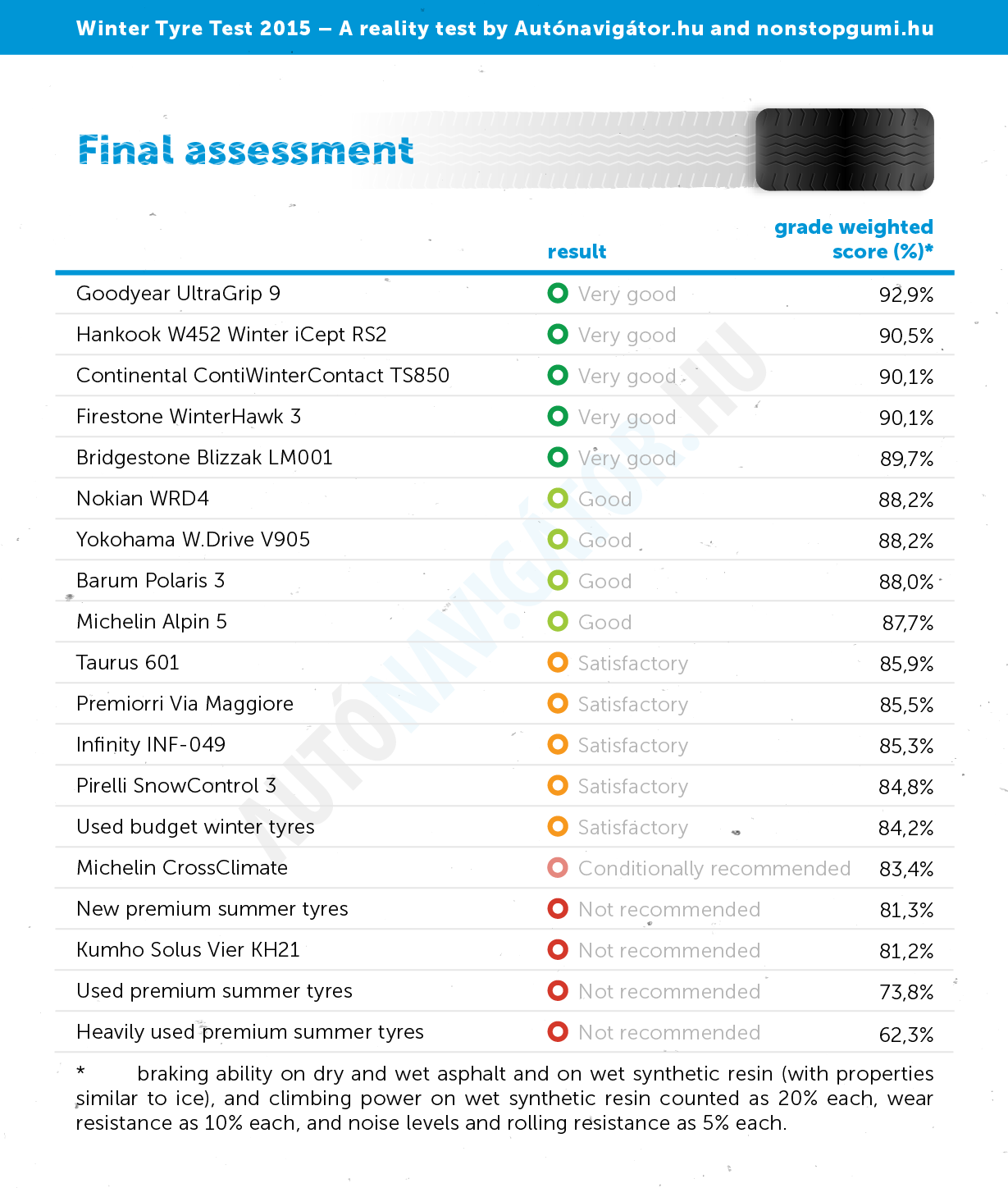 More than half of the tyres we tested performed with good results, four of them achieving final results above 90%. Marketed as all-season tyres, the Michelin CrossClimate can be recommended only with a major caveat: do not use it on snowy or icy roads. Traditional all-season tyres and summer tyres are a poor choice for the winter
More than half of the tyres we tested performed with good results, four of them achieving final results above 90%. Marketed as all-season tyres, the Michelin CrossClimate can be recommended only with a major caveat: do not use it on snowy or icy roads. Traditional all-season tyres and summer tyres are a poor choice for the winter
With our app, you can adjust the weight of each characteristic in the final assessment, and you could even get a result where a lower weight to performance on icy roads would show the Michelin CrossClimate—which did well in our summer heat test—to be the best tyres for winter. While this might be true, you should think twice before choosing a set of tyres that is only halfway between summer and winter tyres when it comes to performance on a resin surface modelling snowy or icy roads, and is in fact closer to summer tyres. Not to mention that it wears faster and costs more. It may be a valid alternative to those who do not drive much and even then only in cities, and can do without their cars when it snows. However, for those who have to use their cars in winter and need to get up slopes even in snow, it is a smarter—and not necessarily more expensive—option to use winter tyres in winter and summer tyres in summer.
